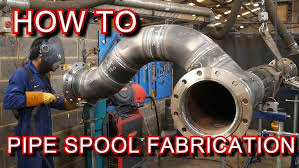
Mastering the Art of MIG Fabrication: A Guide for Welding Enthusiasts
The Art of MIG Fabrication
Metal Inert Gas (MIG) welding, also known as Gas Metal Arc Welding (GMAW), is a popular welding process in the fabrication industry. It involves using a consumable wire electrode and a shielding gas to join metal pieces together.
One of the key advantages of MIG fabrication is its versatility. It can be used to weld a wide range of metals, including steel, aluminium, and stainless steel. This makes it a preferred choice for many fabricators working on diverse projects.
Another benefit of MIG welding is its efficiency. The process produces high-quality welds at a fast pace, making it ideal for projects that require quick turnaround times without compromising on strength and durability.
Additionally, MIG fabrication offers excellent control over the welding parameters, allowing fabricators to achieve precise and consistent results. This level of control is crucial when working on intricate designs or structures that demand accuracy.
Furthermore, MIG welding is relatively easy to learn compared to other welding techniques, making it accessible to both experienced welders and beginners looking to expand their skill set.
In conclusion, MIG fabrication is a versatile, efficient, and precise welding process that plays a vital role in the world of metal fabrication. Its ability to work with various metals and produce high-quality welds makes it an indispensable tool for fabricators across different industries.
Essential Safety and Skill Tips for Effective MIG Fabrication
- Ensure proper ventilation in the work area to reduce exposure to fumes.
- Use appropriate personal protective equipment, such as gloves and goggles, to prevent injuries.
- Regularly inspect and maintain welding equipment for optimal performance.
- Follow recommended safety procedures when handling and storing welding gases.
- Clean the surfaces to be welded thoroughly to ensure strong weld joints.
- Practice good ergonomics to prevent strain or injury during welding tasks.
- Attend training sessions or workshops to improve your MIG welding skills.
Ensure proper ventilation in the work area to reduce exposure to fumes.
To ensure a safe working environment during MIG fabrication, it is crucial to maintain proper ventilation in the workspace. Adequate ventilation helps reduce exposure to fumes produced during the welding process, promoting better air quality and safeguarding the health of welders. Implementing effective ventilation systems or working in well-ventilated areas can minimise the risk of inhaling harmful fumes, ensuring a healthier and more comfortable working environment for all involved in the fabrication process.
Use appropriate personal protective equipment, such as gloves and goggles, to prevent injuries.
When engaging in MIG fabrication, it is crucial to prioritise safety by using the appropriate personal protective equipment. This includes wearing gloves and goggles to safeguard against potential injuries. Gloves provide protection from heat and sharp edges, while goggles shield the eyes from sparks and harmful UV rays emitted during the welding process. By ensuring that proper safety gear is worn at all times, welders can minimise risks and work confidently in a secure environment.
Regularly inspect and maintain welding equipment for optimal performance.
Regularly inspecting and maintaining welding equipment is crucial for achieving optimal performance in MIG fabrication. By conducting routine checks and servicing, fabricators can ensure that their equipment operates efficiently and effectively. This proactive approach not only enhances the quality of welds but also extends the lifespan of the machinery, reducing the risk of unexpected breakdowns during critical projects. Investing time in equipment maintenance is a wise practice that can ultimately save time and resources in the long run, while also upholding safety standards in the workshop.
Follow recommended safety procedures when handling and storing welding gases.
It is crucial to adhere to recommended safety procedures when handling and storing welding gases in MIG fabrication. Proper handling of these gases is essential to ensure the safety of the welder and those in the vicinity. This includes storing the gases in designated areas, ensuring proper ventilation, and using appropriate personal protective equipment such as gloves and goggles. By following these safety protocols diligently, welders can minimise risks and create a secure working environment for themselves and others involved in the fabrication process.
Clean the surfaces to be welded thoroughly to ensure strong weld joints.
Ensuring the surfaces to be welded are clean is a crucial tip in MIG fabrication to achieve strong weld joints. Proper cleaning removes any contaminants, such as dirt, grease, or rust, that could compromise the integrity of the weld. By taking the time to thoroughly clean the surfaces, fabricators can create a clean welding environment that promotes better fusion between the metals and ultimately results in stronger and more durable weld joints.
Practice good ergonomics to prevent strain or injury during welding tasks.
Practising good ergonomics is essential when engaging in MIG fabrication to prevent strain or injury during welding tasks. Maintaining proper posture, positioning equipment at comfortable heights, and using supportive gear can help reduce the risk of musculoskeletal issues. By prioritising ergonomics, welders can work more comfortably and efficiently, ensuring long-term health and well-being while producing high-quality welds.
Attend training sessions or workshops to improve your MIG welding skills.
Attending training sessions or workshops is a valuable tip for enhancing your MIG welding skills. These educational opportunities provide a structured environment where you can learn new techniques, refine your existing skills, and stay updated on the latest trends in MIG fabrication. By participating in such sessions, you can gain valuable insights from experienced professionals, receive hands-on guidance, and practice in a supportive setting. Continuous learning and improvement through training not only boost your confidence as a welder but also ensure that you are equipped to tackle a variety of welding challenges with precision and efficiency.
